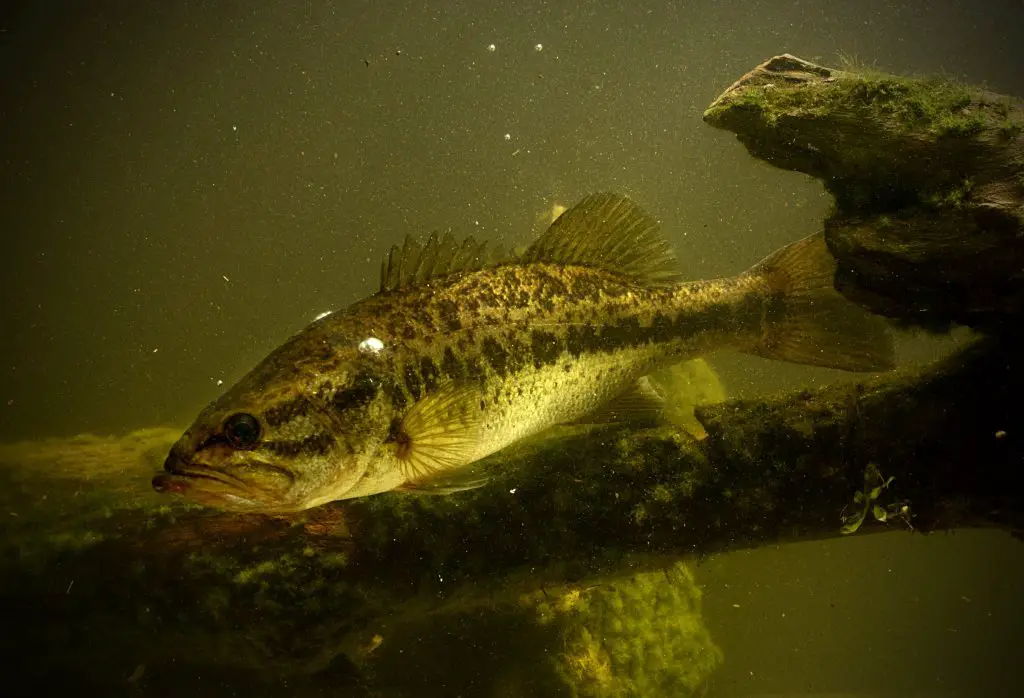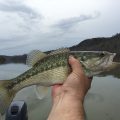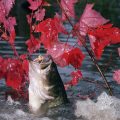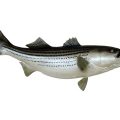Bass beds have been a fisherman’s best friend for decades and are small depressions in the riverbed caused by male bass aggressively defending their nests. In the springtime, when male bass are just coming out of winter hibernation and returning to the open water, they spawn and return to their nests, usually in shallow water close to the structure. These nests can be found by spotting cleared areas near the structure and seeing the nests from the surface. Bass beds are found in summer and winter habitats, with the most productive bass caught from November through March.
Why Do Bass Beds Form?
Bass beds are an exciting formation found in many parts of the world, especially in northern America. When summer is here and the temperature rises, the bass comes out of hibernation from winter.
Those bass have been suspended offshore in creek channels all winter long, making them difficult to catch. They move up shallows to lay their eggs once the water gets warmer. The male bass (usually weighing just a couple of pounds) makes a circular depression called a “bed” on a sandy bottom to begin spawning. The bass keeps swimming around the bottom, brushing away the sand with its fins to protect its nest. This form is called a “bass bed.”

How to Fish on a Bass Bed
Bass beds are famous for largemouth and smallmouth bass. You need to know a few things to fish a bass bed successfully. Bass like to cover and spend more time in areas with structure. Second, the bass is attracted to food and feeds in areas with baitfish. Finally, pay attention to weather conditions and adjust your fishing strategy accordingly.
The best time to fish a bass bed is early in the morning or late in the evening, when the bass is most active. When you find a bass bed, be sure to check the depth of the water. Bass beds typically have water that is between 12 and 16 inches deep.
How to Find a Bass Nest?
Bass beds are generally located near structures, such as logs, rocks, and bridges. Bass will often feed near these areas. Bass beds are a great way to catch more bass. When bass are concentrated in one area, anglers are more likely to catch them.
The Bass Nesting Timeline
The bass nesting timeline is vital in selecting the right bass bed for your angling needs. By understanding how long bass will typically spend in different stages of the nesting cycle, you can make informed decisions about what type of bass bed is best for you.
Bass will return to their spawning grounds in late winter or early spring to lay eggs. After hatching, the young bass will spend the summer feeding and growing before returning to their nests in the fall and winter.
Knowing when and where to find fish is essential to success. This timeline will help you establish a pattern of bass activity and provide you with valuable information on when to be on the lookout for bass.
How Can You Identify Where a Bass Nest Is?
Bass beds can be found in many places around the home, but you can use a few easy tips to help identify where they are. First, look for dark spots on the ground or near water – these are likely areas where bass are hiding and breeding. You can also look for plants damaged by bass, as these fish love to eat soft plant material.
Look for areas with plenty of loose rocks, gravel, or cobbles. These materials make good spots for bass to lay their eggs and raise their young. Bass also like areas with plenty of plant life – especially aquatic plants like cattails and reeds.
How This Type of Fishing Works
If you’ve ever been fishing for bass in a pond or lake, you’ve probably seen them swimming around on the surface. Bass are bottom feeders, meaning they mostly eat things found at the bottom of a body of water. That’s why bass beds are so crucial to fishermen. Bass beds are popular fishing spots. First, bass prefer to hang out in covered areas near their eggs. As a result, anglers can wait for fish to bite efficiently from the structure.
Best Fishing Times to Fish for a Bass Bed
The best fishing times for a bass bed are typically in the early morning and late evening. During these hours, the bass are active and will take your bait more readily.
Tips for Successful Bass Bed Fishing
If you’re thinking about adding bass fishing to your summer activities list, here are four tips for success:
Go prepared
Make sure you have the right gear and supplies and be prepared to spend some time on the water before you catch a fish. Bass prefer calm water with plenty of cover, so start by finding spots with good structure nearby.
Find the right fishing spot
Bass love to feed in areas with a lot of vegetation and cover, so look for areas with muddy banks or submerged trees. If you’re new to bass fishing, start by targeting smaller fish near the bank before working your way out into deeper water.
Watch the weather
Bass are happy in both warm and cold water, but they thrive in waters that are slightly warmer than average. If the temperature is forecast to drop below 65 degrees Fahrenheit over the next few days, consider heading to a different spot.
Cast lightweight bait
Bass feed on worms, shad, grubs, and other small baitfish, which makes lightweight bait like a jig or crankbait your best bet. Be patient – bass can be finicky. Finally, look out for bass beds in shallow waters.
The Pros and Cons of Fishing a Bass Bed
Fishing in a bass bed is typically calmer than in open water, providing better chances for a successful catch. Bass beds can also provide an opportunity to catch more fish quickly since there is less competition. The downside of fishing a bass bed is that it can be challenging to find. They are often located near areas with strong currents or along weed lines. Bass beds can also be difficult to navigate, making it challenging to get close to the fish. Additionally, lures or baits placed in these areas may get hung up on objects below the water surface, so care must be taken when casting.
Conclusion
If you are into fishing, you should know what bass beds are. Remember, springtime would be the favorite fishing season for bass anglers. It’s that time when the weather gets warmer, and the water temperature rises. It has been tough to catch those bass because they have been suspended offshore and deep in the creek channels. As the water gets warmer, the fish move into shallow water to make beds where they can lay their eggs. This makes it the favorite spot for anglers to fish for bass, also known as a bass bed.











